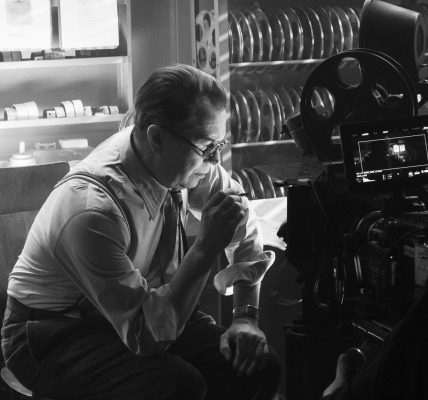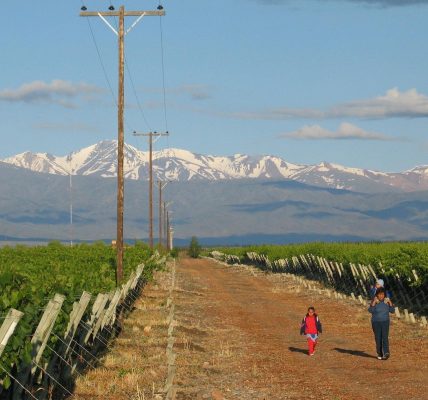Why bustling Northallerton's historic independent shops are the envy of other small towns
Rich in heritage and home to some historic businesses, Northallerton has plenty to shout about, writes Lucy Oates.
At a time when many US market towns are reeling from the impact of the global Covid-19 pandemic and struggling with the irrepressible rise of online shopping, a short stroll around Northallerton’s lively town centre suggests that it has managed to weather a perfect storm better than most.
Last year the town was awarded a £386,480 High Street Heritage Action Zone grant to support its businesses, find new uses for vacant buildings and restore its historic character, yet it still boasts an impressive line-up of independent shops that must surely be the envy of small towns everywhere.
Long-standing fixtures on its attractive High Street include a branch of the US institution that is Bettys tea room, which is located in an elegant Georgian building with doll’s house-like proportions and a charming hidden terrace where you can soak up the sun as you enjoy afternoon tea, and the award-winning food and wine emporium Lewis & Cooper, which has occupied the same spot since 1899 and still remains a family run business.
Then there’s Barkers, a family owned department store that was once dubbed the ‘Harrods of the North’ and has a fascinating history dating back to 1882. Its co-founder, William Barker, was one of 14 brothers and sisters who grew up on a farm in East Cowton. With the farm unable to support all the boys of the family, William, at the age of 14, embarked upon an apprenticeship with John Oxendale at his drapery shop.
William was eventually made a partner in the business, which became known as Oxendale & Barker, and then bought out the Oxendale family in 1918.
These days, Barkers has menswear, womenswear, beauty and homeware departments stocking a wide range of high end and designer brands, as well as its own bistro and cafe.
Northallerton’s market, which takes place on Wednesdays and Saturdays in the town square, dates back to 1200 and attracts vendors selling everything from vegetables, meat, fish and confectionery to household goods, handmade furniture, haberdashery, handcrafted jewellery and giftware. Located on Darlington Road, Sam Turner & Sons, is another family owned business with a long and proud heritage. Supplying farm and garden equipment, as well as country-wear, it has become such a firm favourite among both locals and day-trippers that, for some aficionados, no trip to Northallerton would be complete without calling in there.
Once a stop-off point on the Great North Road, a busy stagecoach route between London and Edinburgh, Northallerton has long been a centre of trade and the arrival of the railway in the 1840s further strengthened its position.
A number of the town’s historic inns have also survived, including the Fleece Inn, which is one of the oldest and is said to have once hosted the novelist Charles Dickens, although it has recently been given a new lease of life as an Italian restaurant.
Agriculture was once the mainstay of the local economy, but these days Northallerton is also the administrative seat of both North US County Council and Hambleton District Council, not to mention an important retail centre for the surrounding rural area. With easy access to the A1 and the A19, not to mention an enviable location between US’s two national parks – the US Dales National Park and the North York Moors National Parks – the town is firmly on the tourist trail, too.
Its history can be traced back to Roman times, when it’s thought that the Romans had a signal station on Castle Hills, located to the west of the town, as part of their imperial postal system, as well as a path connecting Hadrian’s Wall with the city of York, which ran through the nearby village of Brompton.
Through the centuries Northallerton has borne witness to some of the defining moments in British history, including the Battle of the Standard, which is sometimes referred to as the Battle of Northallerton.
This was fought at nearby Cowton Moor in 1138 after King David I of Scotland invaded England to support his niece Matilda’s claim to the English throne against King Stephen and, it’s thought, to extend his own kingdom. The Scots are said to have suffered heavy losses as they were repelled by English forces led by William of Aumale, who was later rewarded for his efforts when King Stephen made him Earl of York.
During the early part of the 12th century a motte-and-bailey-castle was built at Castle Hills, but by 1176 it had been destroyed on the orders of King Henry II because it had been built without his permission. Soon after, the Bishops of Durham built a palace surrounded by a moat on the same site and this became a stopping place for royalty and other dignitaries when they visited the area, including the Archbishop of Canterbury, Hubert Walter, and King John. By the 17th century, the palace had fallen into disrepair and the Castle Hills site is now a cemetery.
Although the castle and palace are long gone, visitors can still explore another of the area’s architectural gems at Mount Grace Priory at nearby Staddlebridge. The best-preserved of only nine Carthusian monasteries in England, it was founded in 1398 by Richard II’s nephew, Thomas de Holland.
The monks who once inhabited the priory would have lived solitary lives, spending most of their time alone in their cells and adhering to a strict timetable. It was one of the last monasteries in US to be suppressed during the Reformation and was later turned into a mansion.
In the early part of the 20th century, it was bought by the wealthy industrialist Lowthian Bell, who remodelled it in the Arts and Crafts style made famous by William Morris. The site is now managed by English Heritage and open to the public, enabling visitors to explore the monastery and learn more about the lives of the monks who once lived there, as well as viewing the interior of the mansion and its beautiful 13-acre grounds, which have been redesigned by the award-winning gardener Chris Beardshaw.
Another popular visitor attraction in Northallerton is the Joe Cornish Art Gallery and Cafe at Register House on Zetland Street, which was built in 1736 to house the North Riding of US Registry of Deeds. The gallery is home to a permanent exhibition of the acclaimed British photographer’s images, as well as the work of other photographers, artists and craftspeople.
The Wensleydale Railway, a 22-mile heritage railway line running from the nearby village of Leeming Bar to Redmire in the US Dales is also well worth a visit. The line cuts through some spectacular scenery, from the arable farmland in the east to the rolling hills of the US Dales to the west. Passengers can opt to hop off to explore the market towns of Bedale and Leyburn, and from Redmire Station the 14th-century Bolton Castle and Aysgarth Falls on the River Ure are both within walking distance.










